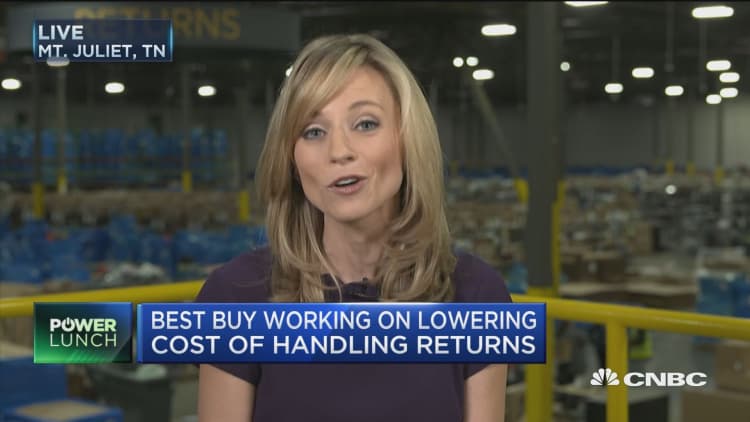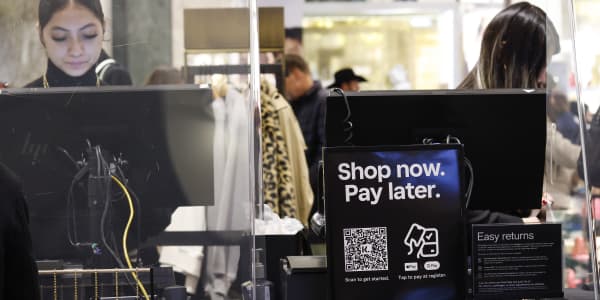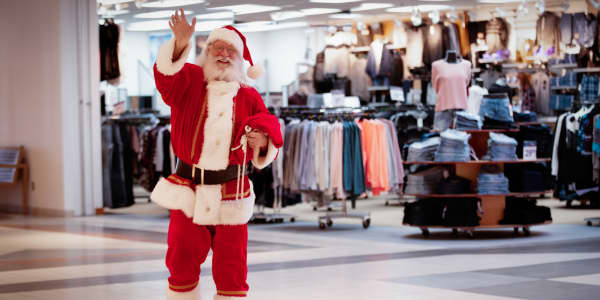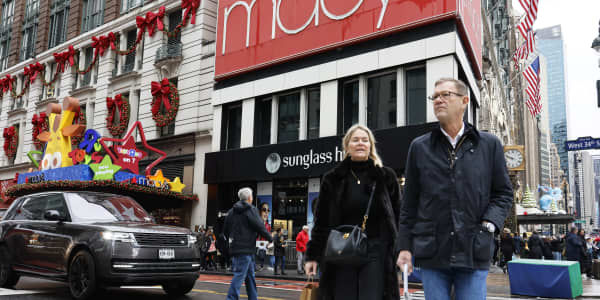
The holiday shopping season is often a peak for retailers' sales. But the flipside to that boom is it leads to peak returns season — costing retailers billions to handle unwanted, used or damaged goods each year.
The surge in digital shopping is only compounding the pain, as record online sales means record online returns. It's not uncommon to see return rates of 30 percent or more for merchandise that's bought online. Clothing returns can be closer to 40 percent.
In total, Americans returned $260 billion in merchandise to retailers last year, or 8 percent of all purchases, according to the National Retail Federation. That swells to 10 percent around the holiday season. Because less than half of returned goods are re-sold at full price, retailers may end up forfeiting 10 percent of their sales at the busiest time of year, according to Gartner Research.
Unwanted and damaged goods either get tossed out or sent through a lengthy chain of liquidators and wholesalers, paying pennies on the dollar to the retailer before eventually selling them to bargain-hunting consumers.
"Retailers are not very good at managing returns right now, and so unless they invest in their ability to manage returns, the volume of returns coming back will cause problems in their overall supply chain," said Tom Enright, supply chain research director at Gartner.
He warns retailers that dealing with returns the old way is a "ticking time bomb turning into a major cash hole."
Best Buy is one retailer that's working on ways to recoup losses associated with returns. When it started this focus three years ago, returns represented 10 percent of its annual sales, or $400 million.
The retailer's ship-from-store capabilities have increased the number of "open-box" products on its website, which means a TV returned to a store in Omaha, Nebraska, can now be re-sold to a shopper in another state on Bestbuy.com. Best Buy has also been working on reducing the amount of product that gets damaged between the distribution center and the consumer by adding protective packaging and better handling.
Meanwhile, third parties have identified an opportunity to cash in on retailers' return problems, and are trying to disrupt the traditional model for dealing with them. The Washington, D.C.-based startup Optoro claims its technology platform optimizes the efficiency for returned merchandise by finding the best re-sale price the moment the product is returned and scanned.
"We help these goods find their next best home, whether it's an individual, business, charity or recycler anywhere around the world," said Tobin Moore, CEO of Optoro. "We're the technology and the systems that retailers are using at their warehouses, in storefronts and headquarters to manage and monitor these returns and to best route them."
"Many retailers are getting 15 cents to 30 cents on the dollar for these returns because they're having such trouble economically processing them and getting them to the next best markets," Moore explained. "We're able to get them to double and triple the recovery."
Sixteen of the top 20 U.S. retailers and manufacturers use Optoro's technology. Its client list includes Home Depot, Target, BJ's Wholesale and Jet.com (owned by Wal-Mart).
After being returned to a store, merchandise ends up at Optoro's warehouse in Mount Juliet, Tennessee. Once the merchandise arrives at the warehouse, it gets tested and inspected first. When it's determined to be in working order, or refurbished and given a clean bill of health, it's simultaneously listed for re-sale on Amazon, eBay, and Optoro's retail site, called Blinq.com.
If an item isn't able to be refurbished easily, it goes onto a pallet of goods sold on Optoro's Bulq.com website. Bulq.com buyers often don't mind doing the repairs themselves because they get a deeper discount.
Electronics make up the bulk of returned products to Optoro, at just under one-third. Home and garden merchandise makes up 20 percent, while baby items, clothing and other consumer electronics are another fifth of the returned products in Optoro's warehouse.
Optoro offers a win-win...win. Retailers get a higher recovery rate for returned goods, waste is reduced, and consumers have another channel to shop for discounted merchandise.





